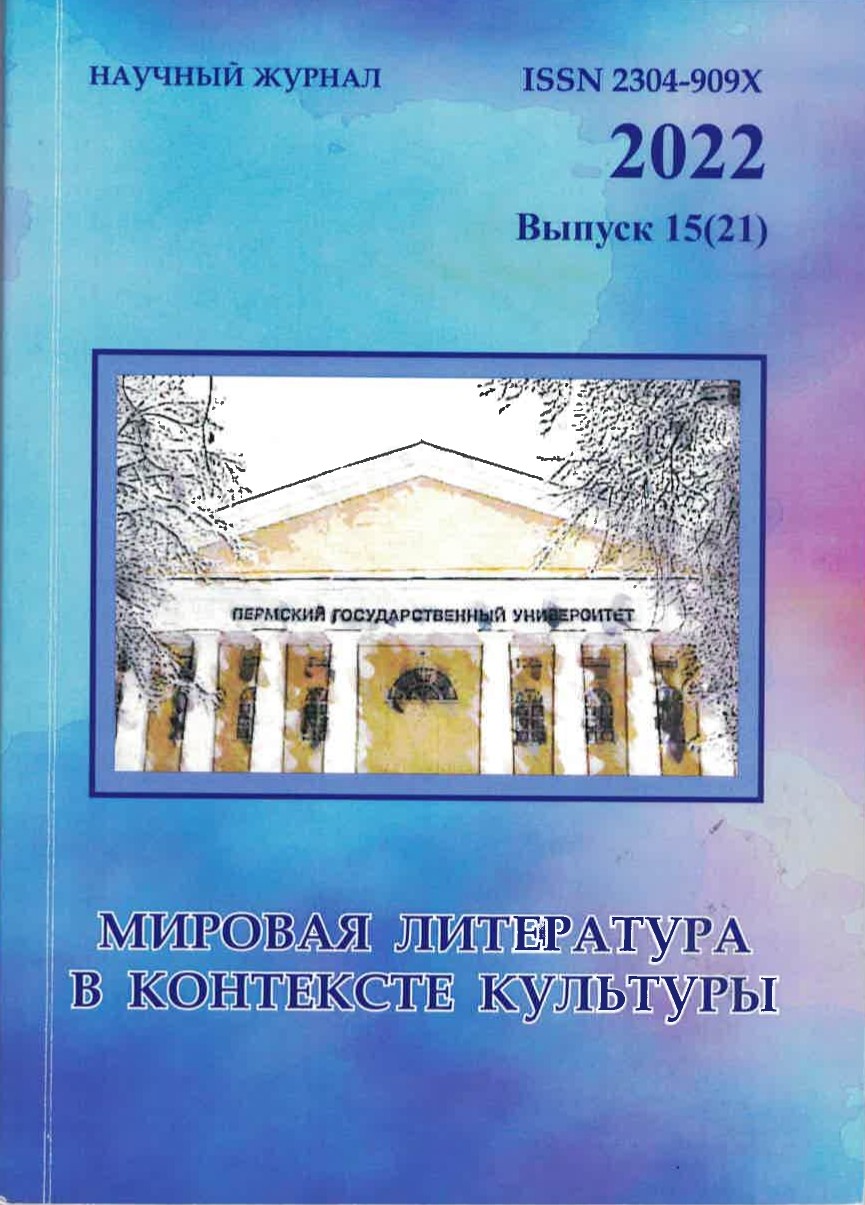Klingsohr's Fairytale in the Novel “Henry von Ofterdingen” by Novalis: Gnostic Myth
DOI:
https://doi.org/10.17072/2304-909Х-2022-15-77-85Abstract
The article is devoted to the problem of the reception of the Gnostic myth in Novalis' novel “Henry von Ofterdingen”. The fairytale of Klingsohr, which is the center of the novel, embodies the ideas of the Jena romantics about a new mythology, in which various religious and mythological systems would be united in a new capacity. Along with explicitly expressed Hellenistic and Christian reminiscences, there are hidden references to Gnosticism in the novel, which are revealed when the text is investigated at a more general level. By means of a comparative analysis, the closeness of a number of images, motifs and themes of the fairytale with the ontological and cosmogonic ideas of the Gnostics, united in mythology, is revealed. This closeness is most fully realized in the image of Sophia – the divine wisdom incarnation, which has a decisive influence on the phasic changes in the world order both in the Klingsohr's fairytale and in the Gnostic myth.Downloads
Published
2022-12-30 — Updated on 2023-12-29
Versions
- 2023-12-29 (2)
- 2022-12-30 (1)
How to Cite
Chernyavsky И. Б. (2023). Klingsohr’s Fairytale in the Novel “Henry von Ofterdingen” by Novalis: Gnostic Myth. World Literature in the Context of Culture, 15(21), 77–85. https://doi.org/10.17072/2304-909Х-2022-15-77-85 (Original work published December 30, 2022)
Issue
Section
Статьи

